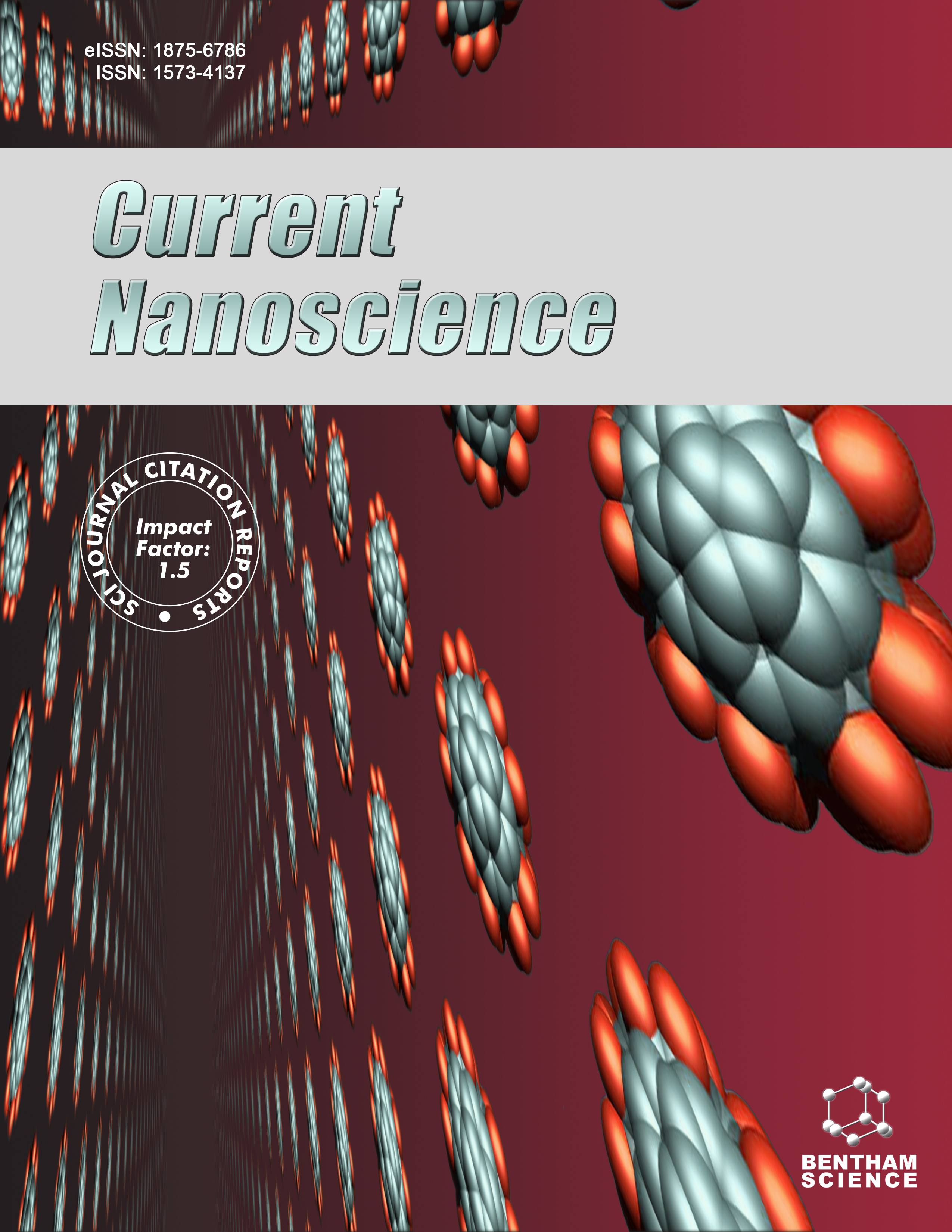- Home
- A-Z Publications
- Current Nanoscience
- Previous Issues
- Volume 20, Issue 5, 2024
Current Nanoscience - Volume 20, Issue 5, 2024
Volume 20, Issue 5, 2024
-
-
Fabrication of Graphene-based Ammonia Sensors: A Review
More LessGraphene gas sensors have gained much scientific interest due to their high sensitivity, selectivity, and fast detection of various gases. This article summarizes the research progress of graphene gas sensors for detecting ammonia gas at room temperature. Firstly, the performance and development trends of the graphene/semiconductor Schottky diode sensor are discussed. Secondly, manufacturing methods and the lat Read More
-
-
-
The Role of Biosensors in Detection of SARS-CoV-2: State-of-the-Art and Future Prospects
More LessAuthors: Nimisha Roy, Abhipsha Khadanga, Amar Dhwaj, Amit Prabhakar and Deepti VermaThe world is fighting a pandemic so grave that perhaps it has never been witnessed before; COVID-19 is caused by the severe acute respiratory syndrome coronavirus 2 (SARSCoV- 2). As of August 31st, 2022, the WHO declared the total number of confirmed cases was 599,825,400, with 6,469,458 confirmed deaths from 223 countries under the scourge of this deadly virus. The SARS-CoV-2 is a β-coronavirus, which is an e Read More
-
-
-
Virus-like Particles for Disease Diagnosis and Drug Delivery Applications
More LessAuthors: Rishav Sharma and Rishabha MalviyaVirus-like particles (VLPs) are nanoscale, self-assembling cage structures made out of proteins with practical uses in biomedicine. They might be used to create better vaccinations, imaging equipment, gene and drug therapy delivery systems, and in vitro diagnostic equipment. VLPs are nanostructures that might be used in medicine, immunization, and diagnostics, among other areas. Many VLPs-based vaccines are now i Read More
-
-
-
Recent Advances in the Nanotechnology-Based Applications of Essential Oils
More LessAuthors: Lei Zhang, Jingyi Lin, Can Zhang, Sijing Hu, Yang Dong, Guanwei Fan and Feng HeEssential oils (EOs), which are volatile aromatic substances extracted from plants, exhibit antibacterial, antitumor, antiviral, antioxidant, anti-inflammatory, and other effects. Eos are widely used in different fields because of their various biological activities. EOs are volatile and insoluble in water, so their effective utilization rate is greatly reduced. In this regard, researchers propose to use nanotechnology to construct an EO Read More
-
-
-
A Review on Solid Lipid Nanoparticles as Nano Drug Delivery Transporters
More LessAuthors: Smita D. More, Anjali S. Wadhokar and Rushali S. BedjawalgeSolid lipid nanoparticles (SLN) have several potential uses in research for medicine such as drug discovery and drug delivery, an area at the forefront of evolving area of nanobiotechnology. In general, SLNs were created to address the drawbacks of conventional colloidal carriers, including emulsions, liposomes, and polymeric nanoparticles since they provide various advantages such as favourable release profiles Read More
-
-
-
Synthetic Strategies for Vitamin-loaded Carbon Dots and their Detection using Biosensors: A Review
More LessAuthors: Himanshu Chaudhry, Naresh K. Rangra and Pooja A. ChawlaCarbon dots belong to the class of nanomaterials invented accidentally and are attracting a lot of attention these days. Carbon dots are non-toxic, photostable, and easy-to-synthesize nano formulations having good water-soluble properties when treated chemically by manipulating surface active groups, followed by the addition of solubilizing agents and size reduction. These are widely used in bioimaging, electrochemical se Read More
-
-
-
Synthesis and Characterization of Carbon Nano Sphere-doped Gd: Alpha Sb2O4 Nanostructure for High-Performance Energy Storage Applications
More LessAuthors: Vinayak Adimule, Parashuram Lakshminarayana, Kalpana Sharma, Nidhi Manhas and Walid NabganBackground: To enhance the super capacitive properties of nanocomposites, the effective method is to combine carbon nanospheres with mesoporous structures with Gd3+:α-Sb2O4 inorganic nanocomposites (NC) to form hybrid electrodes. An as-prepared hybrid electrode material possesses increased energy density, high rate of reversibility and cyclic stability when incorporated in electrochemical cyclic voltammetr Read More
-
Volumes & issues
-
Volume 21 (2025)
-
Volume 20 (2024)
-
Volume 19 (2023)
-
Volume 18 (2022)
-
Volume 17 (2021)
-
Volume 16 (2020)
-
Volume 15 (2019)
-
Volume 14 (2018)
-
Volume 13 (2017)
-
Volume 12 (2016)
-
Volume 11 (2015)
-
Volume 10 (2014)
-
Volume 9 (2013)
-
Volume 8 (2012)
-
Volume 7 (2011)
-
Volume 6 (2010)
-
Volume 5 (2009)
-
Volume 4 (2008)
-
Volume 3 (2007)
-
Volume 2 (2006)
-
Volume 1 (2005)
Most Read This Month
Article
content/journals/cnano
Journal
10
5
false
en


